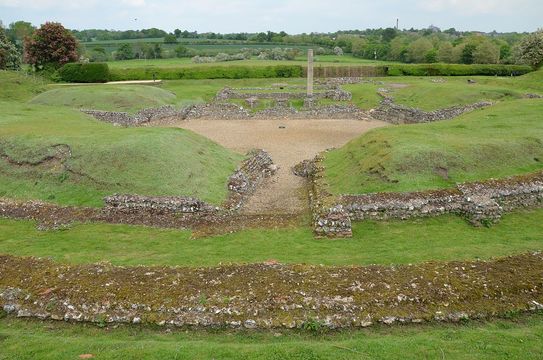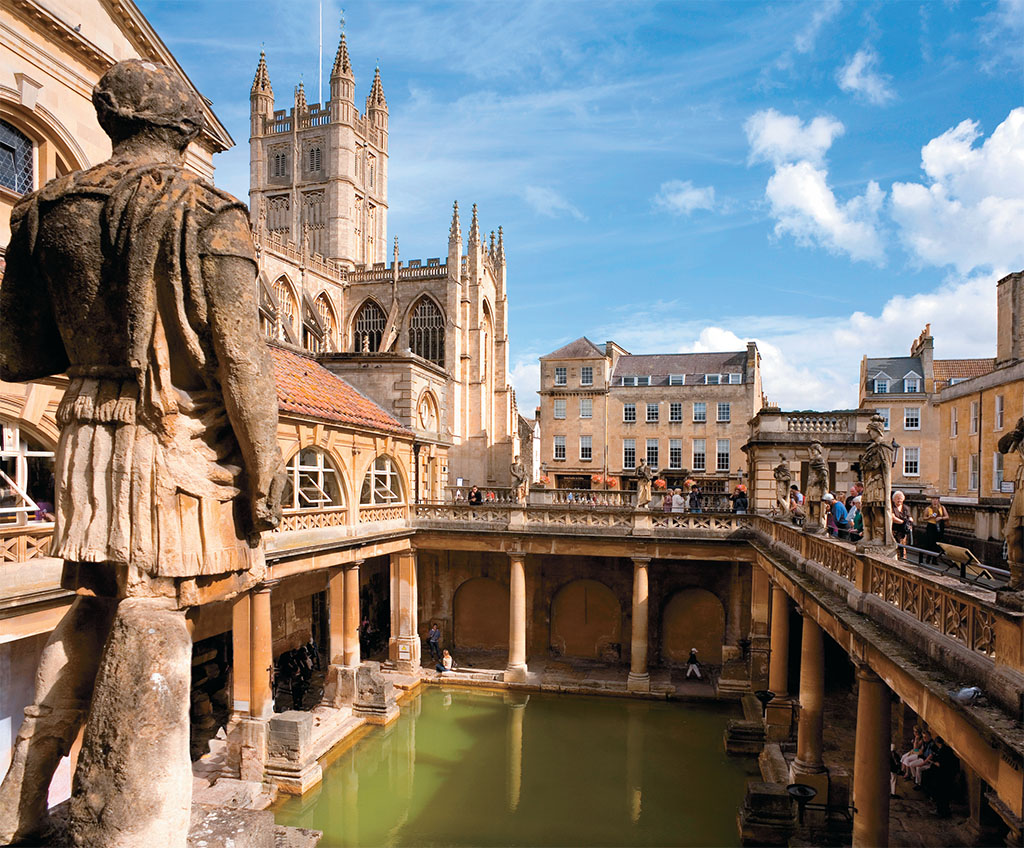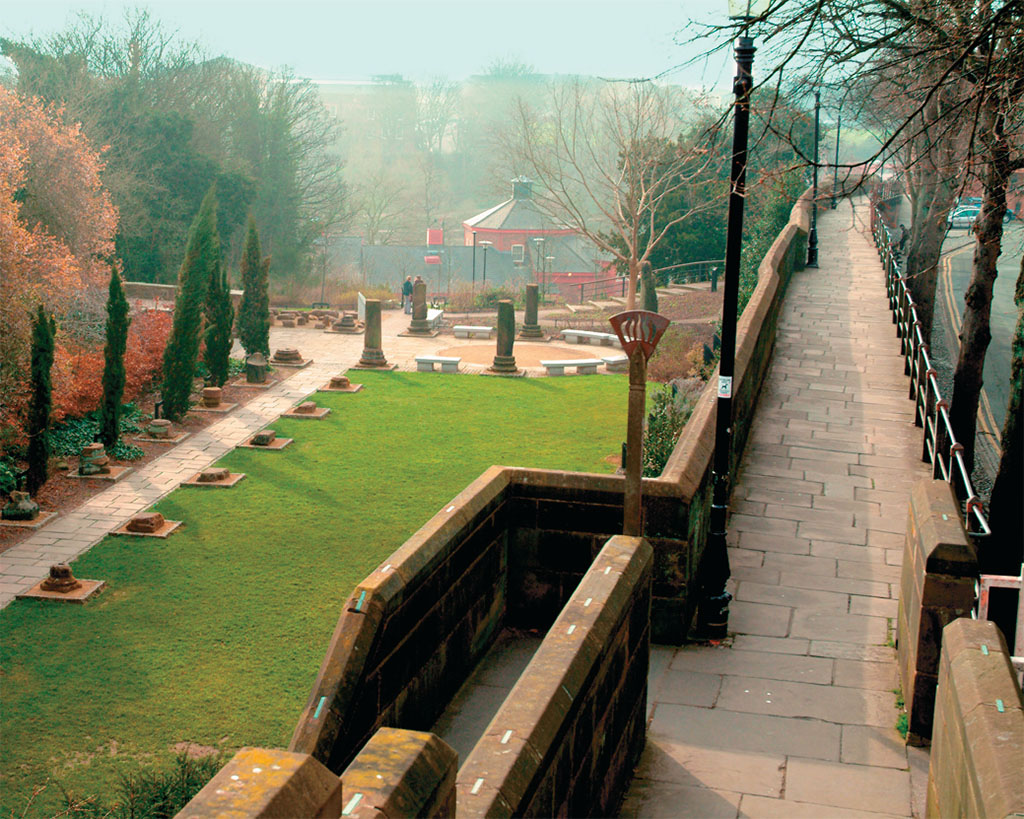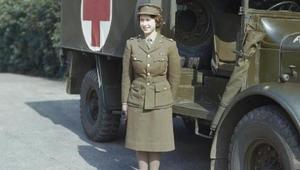
Verulamium, St. Albans.Caroloe Raddato / CC
Occupied by the Romans from the 1st to the 4th century, Roman historic sites abound in modern Britain. Here's where to find them.
From the 1st century to the 4th, Britain was a part of the Roman Empire. Occupied by Rome’s Legions and governed by Roman administrators, the conquered Celts gradually became Romanized. By the 5th century, Rome’s legions were gone. The empire’s footprint remarkably remains to this day. Here are 10 great places to catch a glimpse of what the Romans left behind.
Hadrian's Wall
This is the granddaddy of Roman construction. Stretching 73 miles across the island from the Irish Sea to Newcastle, Hadrian’s Wall was the last outpost of the Roman frontier. Among other great vantage points, see it at Housesteads, and the Roman fort of Vindolanda, near Hexham on the A69.
The Roman Baths, Bath

The Roman Baths, in Bath. PETER PHIPP/TRAVELSHOTS.COM/ALAMY
The most complete Roman complex in Britain shows the spa town’s natural hot springs was a favorite holiday resort almost two millennia ago. From the heated swimming pool called the Great Bath to central heating, those Romans were up-to-date in every way.
Wroxeter Roman City
The Romans called the city Viroconium. Though the fourth-largest metropolis in Roman Britain has largely disappeared beneath Shropshire farmland, what is left is a remarkable depiction of civic life in urban Roman Britain. What happened to Viroconium is simple; a few hundred years after the Romans left, the people moved to Shrewsbury.
Corinium Museum
At the confluence of major Roman roads, Cirencester was a bustling market town in Roman times. Cirencester’s Corinium Museum near the market square does a spectacular job unpacking and recreating Romano-British domestic life.
Caerleon, South Wales

Caerleon. AKP PHOTOS/ALAMY
One of the three Roman legions stationed in Britain was based at Caerleon for more than 200 years. They left behind the most complete Roman amphitheatre in Britain and the remains of the only Roman legionary barracks on display in Europe. Check out the whole story at the National Roman Legion Museum.
Verulamium, St. Albans
St Alban’s has a reputation today as quite a posh town. It did in Roman times as well. The city of Verulamium on the Foss Way thrived from commerce and travel. Its Roman treasures are well-preserved in a museum—and its Roman walls and building shards are spread through what is now a public park on the river.
Fishbourne Roman Palace
Down along the south coast near Chichester, Fishbourne is the site of one of the greatest Roman villas yet discovered—reputed to have been the demesne of one of the local Anglo-Romano puppet kings. There’s a lovely Roman garden, but the highlight is the immense and intricate mosaics in the well-preserved tile floors of the villa.
Chester, Cheshire

Chester. SKYSCAN PHOTOLIBRARY/ALAMY
Home of the Roman 20th Legion for more than 200 years, Chester was one of the most important military bases in Britain. Check out the largest Roman amphitheater in Britain, seating 10,000 legionaries and civilians. There are Roman gravestones in the Grosvenor Museum and a recreated Roman street at the Dewa Roman Experience.
Chedworth Roman Villa
The remains of one of the largest Roman villas in Britain, Chedworth was the landed estate of its day. Tucked in the Cotswold hills near Cirencester, Chedworth depicts Roman living quarters, stables and gardens, and excellent interpretative displays, marvelously maintained and presented by the National Trust.
Dorchester, Dorset
The Romans made Durnovaria and their footprint lingers still. See Roman wall along the town Walks, and visit the Roman amphitheater, the Maumbury Rings, about dusk. The largest Iron Age Castle in Britain, Maiden Castle on the outskirts of town, was abandoned when the Romans “civilized” the area.
* Originally published in July 2016.









Comments